|
Recent Articles Archive of National Post Articles Recent Articles |
|
||
|
The
Whites of Spring Today’s
Vintages release has a small bevy of Spring whites some of which are worth
trying. The best buys were the ABCs (“Anything But Chardonnays”).
The slightly less expensive ($13.95) West Brook 2001 Sauvignon Blanc from the Marlborough region on the South Island is also very bright but with more citrus-tangerine flavours. It’s fresh, slightly spritzy flavours will likely appeal to those who are a tad ambivalent about this grape's grassy character.
As recent attempts to find decent organic wines haven’t been too successful, I am happy to report a new sighting. Paladin 2000 Pinot Grigio Bosco del Merlo at $14.90 has delightfully rounded, honeyed, ripe apple-pear flavours that are a perfect foil for seafood or just good old sipping. Keep in mind that this organic Italian Veneto effort isn’t totally sulphur-free, it comes with a surprising high 26.5 parts per million.
Moving
on to the reds, last week’s recommended Finca
Flichman 1998 Reserva Syrah at only
$14.95, is still one of the buys of the
release. CLICK
HERE to see last week’s feature. In
terms of quality, the best Syrah is Penfolds
1998 Shiraz Bin 128 at
$29.95 from South Australia’s Coonawarra region.
Harmony is what makes this wine so special.
Its rich, mouthfilling, black cherry purée flavours are balanced by just
the right amount of cedar and acidity. Great
today, it can age gracefully over the next few years. As
for the best Italian red of the release, it’s the Castello
di Monastero 1997 Chianti Classico Riserva
at $32.90. It has youthful, well
textured, dried plum, chocolate and red pepper purée flavours with a fine,
harmonious finish. I
have saved the best and worst for last. Despite
pleas to LCBO management, the insideous Romanian
Phoenix
1999 Cabernet Sauvignon Castle on the Rock
($8.85) hits the shelves today. For my taste (three bottles), it is one of the
most disagreeable, vinegar-inspired reds I have come across in quite some time.
Everyone looses when this type of wine is fobbed off on unsuspecting
consumers.
The
first question is whether anyone notices anything odd about the label? Kudos to
those who pointed out that this Rioja is made from a single grape as opposed to
the usual blend of grapes. The big prize, however, goes to those who thought:
“hey, this is a red – how come it’s barrel
fermented, isn’t that the exclusive domain of whites?” In
fact, Beronia’s Tempranillo starts out in large stainless steel where it is
macerated from some 24 hours. The
fermenting wine sans solids is then brought over to small new American barrels where
it is permitted to complete malolactic fermentation followed by battonage
(lees stirring) over the next six months. It
is them assembled, filtered and bottled. It
is important to note that Rioja DOC regulations do not permit the words “barrel
fermented” to
appear on the front label and so Beronia has resorted to using the “Elaboracion
Especial” descriptive.
This innovative process adds a new dimension of accessibility and fruit
to the wine, a wonderful new direction for Rioja. Coming
up:
Next Saturday’s sky-high Henry of Pelham winemakers dinner at the TD tower’s Canoe
Restaurant features the soon to be released Speck Family Reserve wines. The
cost is $130 plus tax and gratuity (TD parking is free).
For information call 416-364-0054.
Nelson
Backgrounder Nelson
is located at the top of the South Island of New Zealand and claims fame as the
only commercial tobacco producing
region in New Zealand. Until about 20 years ago, along with the 'baccy, apples
and hops were the mainstay of this
horticultural region and during the harvest season the town's population swelled
by the influx of transient workers. During
the 1960's and early 1970's, Nelson was definitely the 'hippy' town of New
Zealand but many of the transients stayed
and tourists returned to settle, enjoying the lifestyle and climate that this
sunny region offered. It is not surprising,
then, that modern viticulture soon joined the list of horticulture
activities in the Nelson valley. The
main horticultural activities take place in a geologically formed lowlands
between the Arthur Range - which hosts some
of NZ's oldest rocks - to the west and the geologically intriguing Richmond
Range on the Alpine Fault Line to the east.
The Richmond Range separates Nelson from its slightly southerly neighbour, the
country's premier grape growing region, Marlborough. There
are two distinct viticultural subregions within Nelson - the flat, free
draining, alluvial Waimea Plains in the east on the edge of the Richmond Range
and the low rolling Moutere Hills further west. Viticulture is also emerging in the Golden Bay area, over the Takaka Hill at the top of the Arthur Range. Although
there was some dabbling with vines from 1918 onwards and Frank Berrysmith, the
government viticulturist, recorded 5 acres of outdoor vines in his 1960 survey,
Hermann Seifried is the modern founder of Nelson viticulture, establishing his
first vineyard in Upper Moutere in 1974. Looking
back at Michael Cooper's groundbreaking work, the first edition of "The
Wines and Vineyards of New Zealand" (1984), the statistics that he cites
from 1982 indicate there was only 39 hectares planted in vines, just 0.6% of the
national vineyard total, with only a single handful of licensed producers. But did Cooper make a mistake when he said "Nelson is unlikely to emerge as a major district for wine"? For in 2001 Nelson is the country's 4th largest producing region after Marlborough, Gisborne and Hawkes Bay. The number of licensed producers has now increased to 28.
|
|||
|
Copyright Food & Beverage Testing Institute of Canada
2004 |
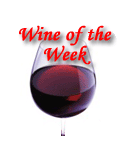


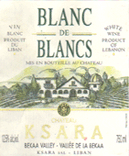 I
was especially thrilled to discover a honeyed, fruit-driven white from Lebanon.
I
was especially thrilled to discover a honeyed, fruit-driven white from Lebanon.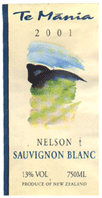 Two
excellent Sauvignon Blancs from New Zealand are definitely worth buying.
Two
excellent Sauvignon Blancs from New Zealand are definitely worth buying.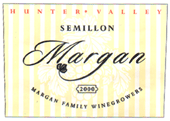 Another
seriously tasty wine from Australia’s Hunter Valley is
Another
seriously tasty wine from Australia’s Hunter Valley is  Of
the 44 Vintages whites, there are a dozen Chards, some of which are not worthy
of a detour. Unfortunately, two 1998 white Burgundies in the high $40s were not
presented. Of the group tasted, the best was the rather robust
Of
the 44 Vintages whites, there are a dozen Chards, some of which are not worthy
of a detour. Unfortunately, two 1998 white Burgundies in the high $40s were not
presented. Of the group tasted, the best was the rather robust 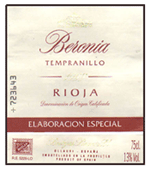 At
the other end of the spectrum is one of the most inspired Riojas to appear in
Vintages
At
the other end of the spectrum is one of the most inspired Riojas to appear in
Vintages